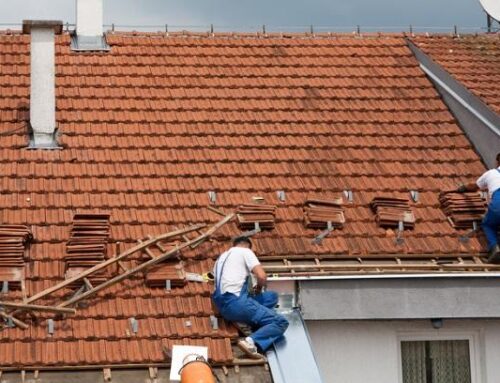
A shingle roof installed by a professional roof company should have a long service life, or at least last as long as the shingles are designed to last. Yet when roofers do not nail the shingles down correctly, problems can arise. The nailing pattern, and where shingles are nailed when they are affixed to a roof, is critical to ensure that shingles actually stay on the roof, rather than blowing off or suffering some other type of damage. Before contracting with any company providing roof services, make sure they know proper nailing techniques for each type of shingle, or face the possibility of serious roof damage.
Nailing Shingles Is An Art
Although it may seem like nailing down a shingle roof should be an easy enough job for any experienced roof company, it is actually more complicated than many realize. In a way, nailing down shingles is actually a type of art form, as it requires time, care, and attention to detail. The most important factors regarding shingled roofs is how and where shingles are nailed, and remembering that no two shingles are necessarily the same.
Depending on the type of shingle, shingle thickness, and tab design, shingle manufacturers may require that their products be nailed using specific techniques to ensure they actually stay on the roof. Therefore, it is essential for homeowners to hire roofing services professionals who know this, and who understand the importance of using the right techniques for each shingle, and take their time when performing this roofing service.
When Shingles Are Poorly Nailed
When a roof company does not nail shingles according to the method recommended by the manufacturer, a number of things can happen. Improper nailing can lead to movement of the shingle, or the shingle not laying on the roof properly. This can result in roof leaks and other damage. Also, when shingles are improperly nailed and not tightly affixed, they are much more susceptible to wind damage, since they are not tightly attached to the roof. Many roofs are damaged every year by strong winds that lift and blow shingles right off. If this damage is found to be caused by roofers who improperly nailed shingles, not only can extensive damage occur, but chances are the shingle manufacturer will not honor their warranty.
Proper Nailing Is Essential
To avoid practices that can cause roof damage, the most important factor the roofing company installing a shingle roof must keep in mind is nailing the shingles correctly; however, this can be different for every shingle. Therefore, it is wrong for roofers to assume their is only one method for nailing shingles. Different shingles require different techniques in terms of nail type and length, how deep the nail should be driven, the angle the nail should be driven, and most importantly, the nail position. All of this is critical, and may differ depending upon the shingle type and brand. This is the main reason why manufacturers provide explicit instructions, and often even provide training, on the way in which their various shingle products should be nailed and adhered to a roof.
The important point for a homeowner to remember is that it is essential to work with the right roof company. Always hire a roofer who is experienced in nailing all of the various types of shingle roofs, and who takes the time to determine the right way to nail each shingle product. Roof services who apply shingles according to manufacturer specifications, and who also take their time in order to correctly nail shingles, are important to the overall quality of the job, and the lifespan of the roof. Roof nails may not seem very significant, but they are actually the most critical part of any shingle installation!
Searching For Roof Services In Bryan TX?
Done Right Roofers - A Roofing Company You Can Depend On!
Call 979-464-6655!
Additional Articles:
Roofing Contractors Explain Roof Blisters!
Need New Curb Appeal? Look at Your Roof!
The Best Ways to Have a Replacement Roof That Lasts Forever!

